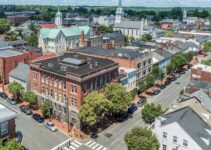Exploring how a less car-centric environment can positively impact the livability of your community-at-large.
“Streets and their sidewalks—the main public places of a city—are its most vital organs.”
Jane Jacobs, Urban Writer and Activist
Walking or biking to and from stores, places of entertainment, public spaces, schools, and public transportation is an increasing consideration when it comes to people determining where they want to live. According to a Washington Post article, real estate agents are witnessing climbing interest for housing options in “walkable communities.”
With rising trends in improving fitness and health, lowering energy use, decreasing dependence on motor vehicles, and living in a more communal or shared environment, cities and towns have begun examining just how walkable, bikeable, and pedestrian-friendly they are. It’s a mounting need as communities look to attract and maintain populations, encourage development, and grow their economies.
Most, if not all, conferences for Planners these days are providing educational sessions focusing on how walkability impacts not only convenience and safety, but also economic and equity issues. The 2019 NationalPlanners Conference (NPC19) offered more than a half dozen classes featuring the subject of walkable streets and neighborhoods.
“Sidewalk contacts are the small change from which a city’s wealth of public life may grow.”
Jane Jacobs, Urban Writer and Activist
The allure of easy access to the amenities and necessities of everyday life is driving a trend to transform sprawling cities and multi-lane highways into more intimate areas of community life. As a result municipalities of all sizes and types are seeking to create and re-envision simpler and safer infrastructure that encourages less travel by car, and more mobility by foot and bike.
Three video presentations that address and support this trend are:
4 Ways to Make a City More Walkable
City Planner Jeff Speck discusses four planning principles that support his “general theory of walkability” to help communities find their freedom from cars and urban sprawl, and inspire the freedom to walk.
#CitiesWeWant: Cities that Enhance the Physical Activity
As part of the Barcelona Institute for Global Health’s series on “5 Keys to Healthier Cities,” this video explores how planners can encourage ‘active mobility’ for their citizens who hopefully will realize the benefits of better health and disease prevention.
How to do a Bike Audit in your community
So your community wants to become more bike- and pedestrian-friendly. Where do you start? Some might suggest with a ‘bike audit.’ The “New Jersey Safe Routes to School” organization details how such an audit can identify barriers and opportunities to becoming a more bikeable community.


